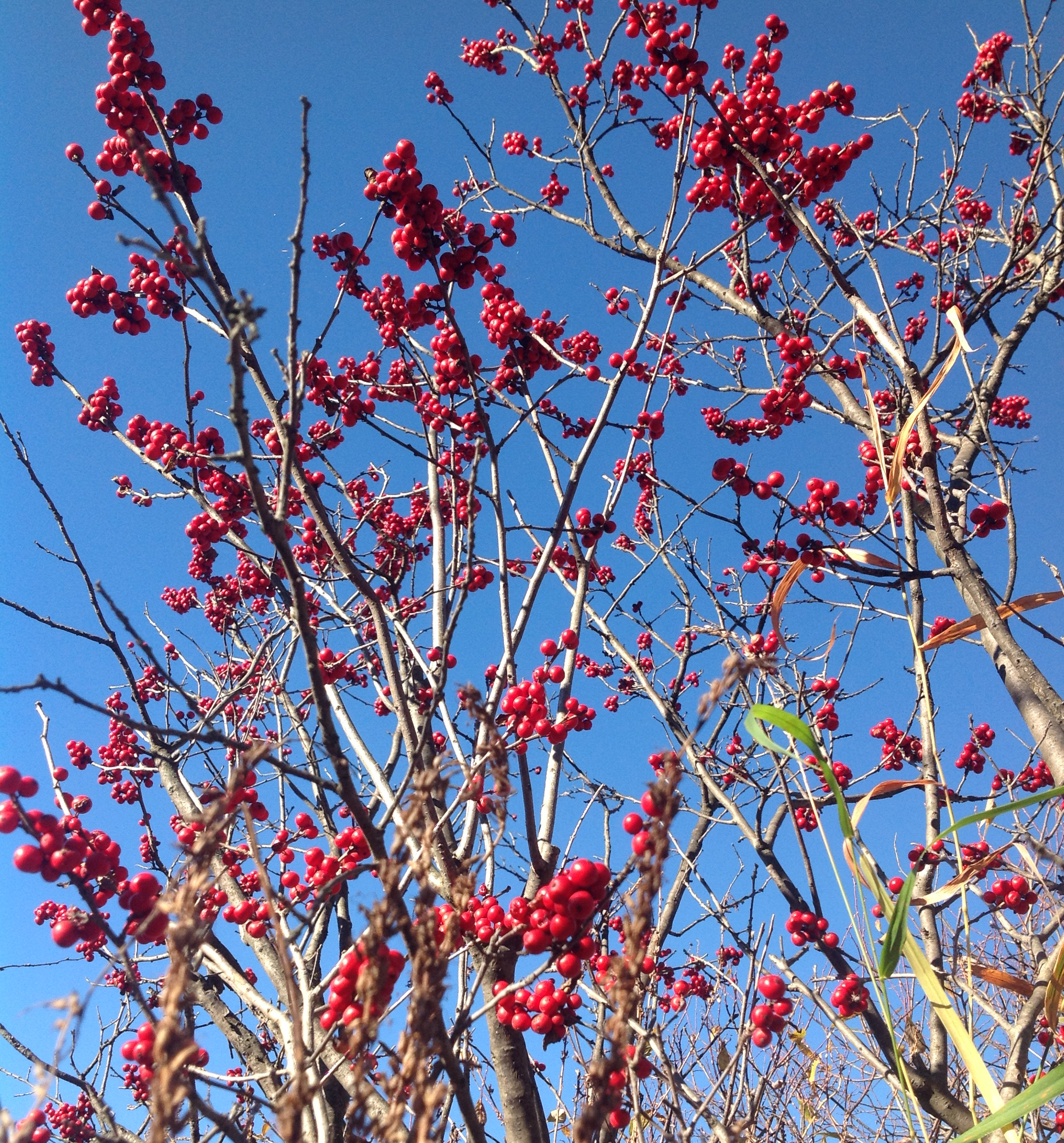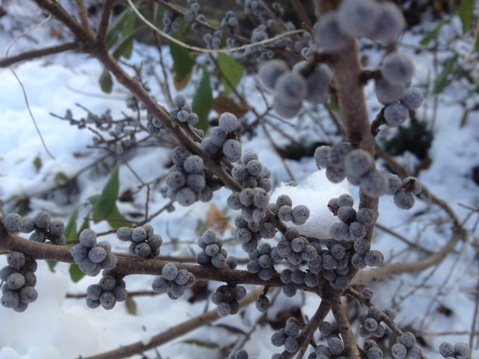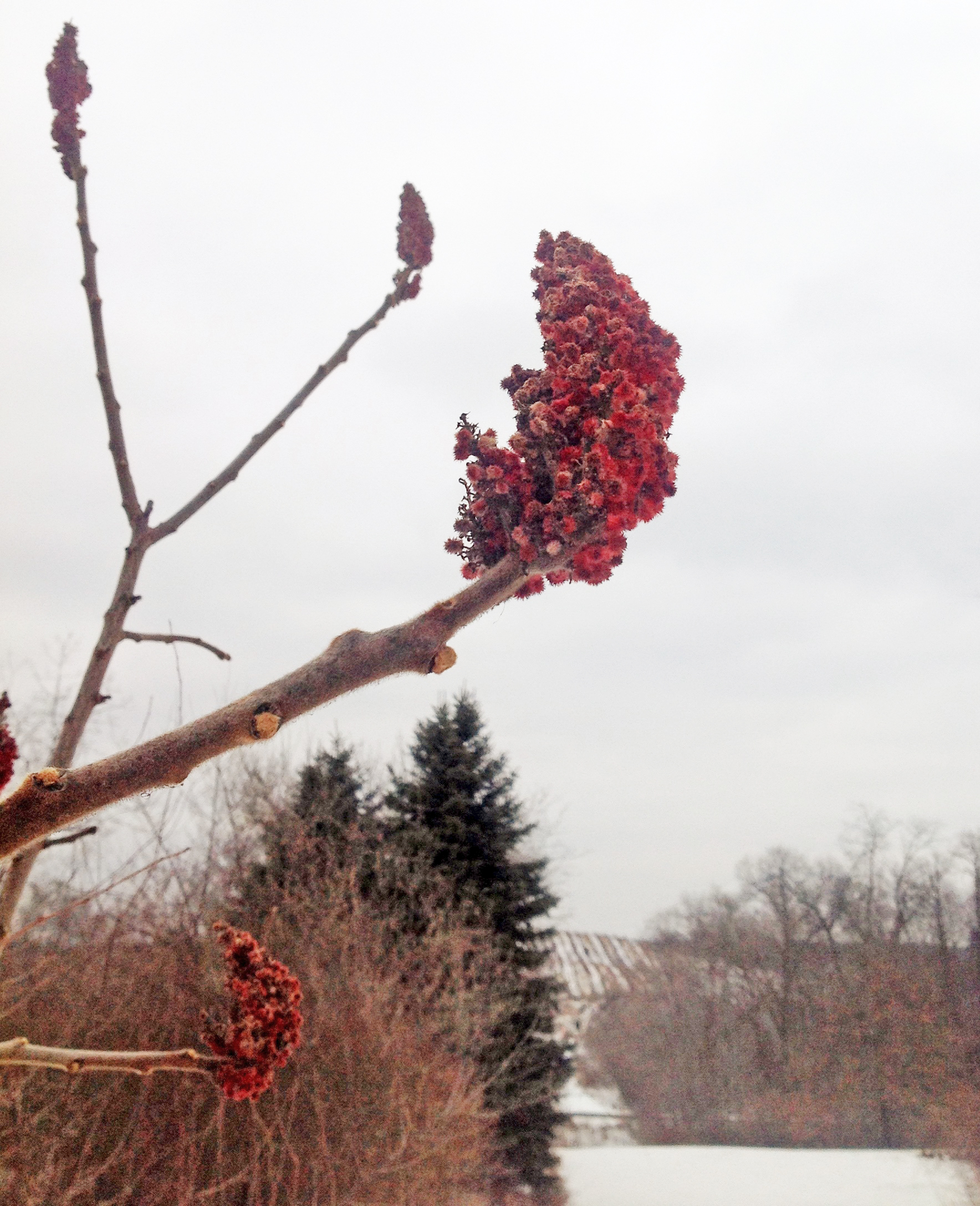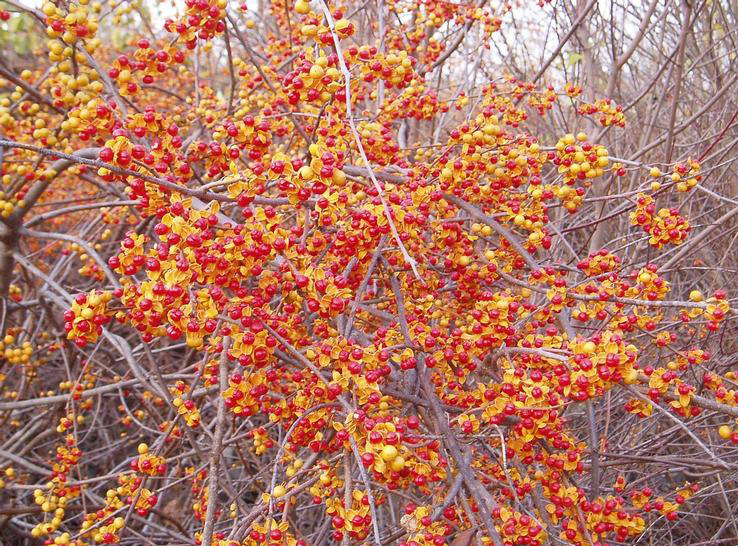Colors in winter landscapes, forests and wetlands
Take a hike on a winter’s day in the woods, along a stream or in a park and discover nature’s gifts of colorful and unique flowers and fruit.

Long after leaves have fallen and snow is on the ground, there is still color to be found in Michigan forests, wetlands and arboretums. Hamamelis virginiana, the common witch hazel, can go unnoticed through much of the season along woodland edges and forest openings. Autumn brings a beautiful display of golden fall foliage. While most plants have gone dormant, witch hazel produces unique flowers in November and December. Numerous flowers with strap-like yellow petals are displayed on bare branches. A Chinese witch hazel, Hamamelis mollis, blooms in February and its fragrance rivals the common lilac. Take a walk at Michigan State University’s Hidden Lake Gardens Arboretum in February and you will never forget this fragrance.

Bright red fruit is found on many plants in the winter, including hawthorns, viburnums, mountain-ash and numerous cultivars of crabapples. One of the most beautiful displays is on Ilex verticillata, Michigan holly or winterberry. It is found in wetlands across much of the Eastern United States.
This deciduous native holly, with its bare branches, appears decorated when covered with one-quarter inch red berries. The fruit often persists into January but can quickly be devoured by flocks of cedar waxwings and robins. Winterberry can reach heights greater than 10 feet. A dwarf cultivar, ‘Nana’, is available for the home landscape and is a much better fit, at a height of 3 feet.

One of the stranger colors for winter fruit is the blue-gray berries that line the stems of Northern bayberry. Myrica pensylvanica has waxy coated berries that make a great combination with evergreens as a back drop.
Northern bayberry can reach 9 feet in height and is hardy to at least Zone 3 winter temperatures, making it hardy across all of Michigan. Native to the Eastern States, this dioecious shrub needs groupings of both male and female plants to achieve a great fruit display.

A native plant, the staghorn sumac, Rhus typhina, is not often considered as a landscape plant due to its ability to spread and form large thickets. It is commonly found in woodland openings and along roads across Michigan.
The fuzzy stems of staghorn sumac reach over 12 feet in height and spread like antlers. Fall leaf color is brilliant, varying from yellows to oranges and reds. Reddish fruit persists into winter with tightly packed, pyramidal clusters that are 6 to 12 inches tall. The fruit is fed upon by bluebirds, catbirds, robins, cardinals, chickadees and wild turkeys.

Not all things that stand out in fall and winter are welcome guests. Oriental bittersweet, Celastrus orbiculatus, is an invasive vine that puts on a colorful display in the fall. The vine’s yellow fruit capsules split open to reveal bright red berries. This aggressive vine spreads via underground runners and from seeds dispersed by birds. Spiraling up tree trunks as it grows into the tree’s canopy, Oriental bittersweet vine can creates pressure on the trees vascular system, just under the bark. This pressure can kill a tree as it cuts off the flow of nutrients and water.
Unfortunately, the great display of berries on Oriental bittersweet makes it attractive for use in holiday wreaths. Wreaths made with oriental bittersweet are attractive to birds that feed on the fruit. If used as an outdoor wreath, birds feeding on the fruit can disperse the seeds into the surrounding environment, creating new infestations.
Take a hike on a winter’s day in the woods, along a stream or in a park and discover nature’s gifts of colorful and unique fruit, and the wildlife attracted to them.



 Print
Print Email
Email

